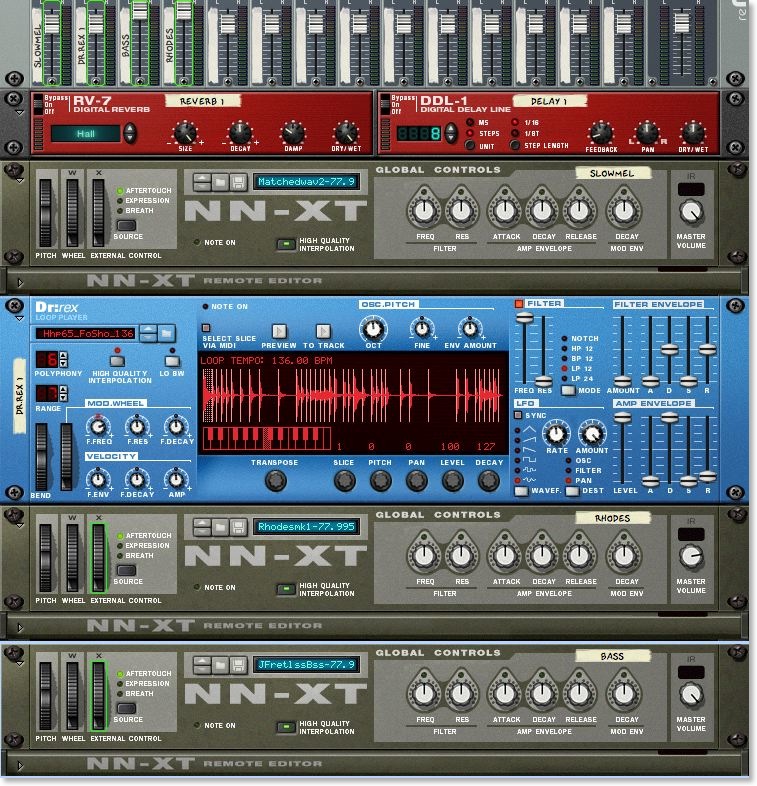Alphadesert

Listen to
Alphadesert
Alphadesert is again a piece
featuring Carlos Alpha, a non-octave scale
based on the division of a perfect fifth into 9
equal parts (each step 77.995 cents).
As Wendy Carlos says: "If you try to play
through a one octave scale of Alpha, you'd find there
are 4 steps to the minor third, 5 steps to the major
third, and 9 steps to the perfect (no kidding) fifth,
but, or course, no octave"
This statement is approximately right because:
1) dividing a minor third (315.641 cents) into 4
equal steps each one measures 78.911 cents
2) dividing a major third (386.313 cents) into 5
equal steps each one measures 77.263 cents
3) dividing a perfect fifth (701.955 cents) into 9
equal steps each one measures 77.995 cents.
The version I use (3/2 divided by 9) has remarkably
good minor thirds (311.98 cents) and major thirds
(389.975 cents) but a pseudo-octave of only 1169.925
cents (very far from an octave of 1200 cents).
To sum it up I can report what my wife said after
listening to it: "it's more listenable than many
other pieces you have composed lately. It sounds like
drunk Minestronics".
This piece uses a new feature X.J.Scott added to a
beta version of his LMSO: "spectrally matched
waveforms"
It means that the harmonic content of the waveform
matches the tuning to be used with it. X.J.Scott
provides one of the infinite number of timbres that
could be devised starting from a given tuning. The
idea is to load the spectrally matched waveform
(saved as an AIFF tuned to A440) into a sampler,
adjust the root to A if necessary, and then set up
filters and envelopes to make an analog style sound
with the waveform. I tried it out with Reason's NNXT
sampler and it works just fine. I used it for the
sound that plays the melody.
I quote X.J.Scott:
"I'll caution that
this whole matching timbres and tunings thing is a
fairly subtle thing like the difference between 12
and meantone, something most people wouldn't notice.
It's not this giant dramatic effect where the
audience sits stunned. But it does enable working
with harsh sounding tunings and takes the edge off of
them. Whether that's a good idea to take the edge off
is an artistic decision! ![]() "
"
Thanks Jeff !!!


